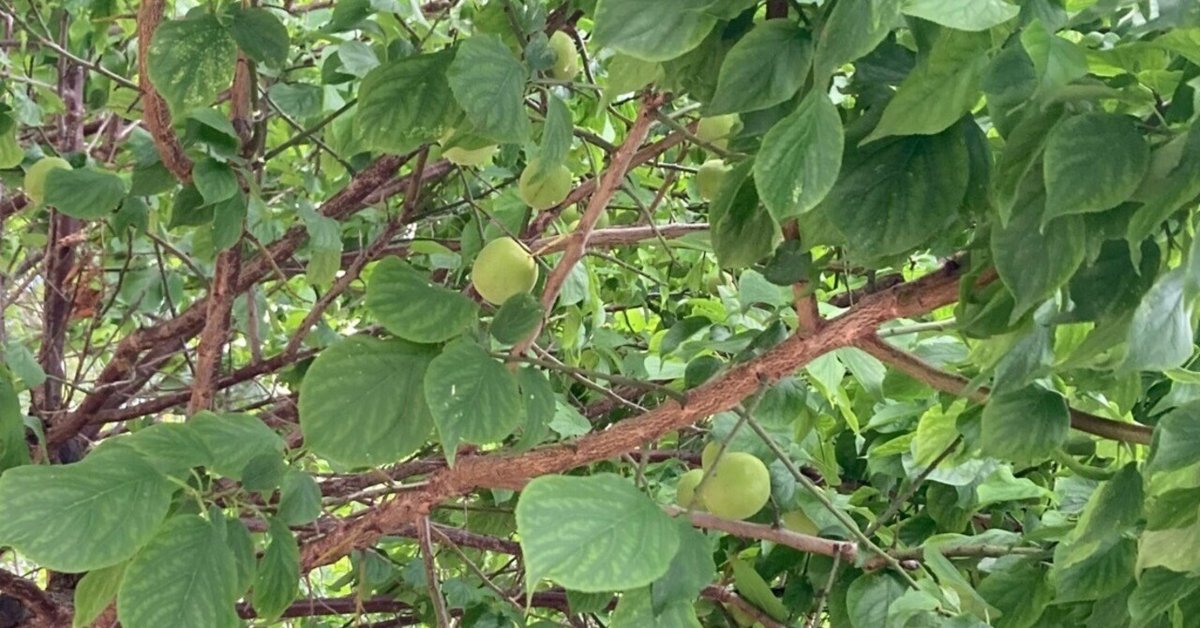
南河内郡太子町朝散歩。 まだ青い梅の実の歴史。
20240602 南河内郡太子町朝散歩。梅、青い固そうな梅の実には毒がある、と聞きました。中国由来の植物の様で、日本のみならず、朝鮮半島でも育っているとの事。いずれ人の手を通して加工され、旨味の濃縮した梅酒や梅干しの形で、大地・自然からのメッセージが伝わって来るものと思います。
Morning walk in Taishi-Cho, Minamikawachi-Gun, Osaka-Fu. I heard that the blue and hard-looking plum fruit, is poisonous. It seems to be a plant of Chinese origin and grows not only in Japan but also on the Korean Peninsula. I believe that the message from the earth and nature will be conveyed in the form of plum wine (umeshu) and pickled plums (umeboshi) with concentrated savoury flavour, which will eventually be processed by human hands.
Morgenspaziergang in Taishi-Cho, Minamikawachi-Gun, Osaka-Fu. Ich habe gehört, dass die blaue und hart scheinende Pflaumenfrucht toxisch ist. Sie scheint eine Pflanze chinesischen Ursprungs zu sein und wächst nicht nur in Japan, sondern auch auf der Koreanischen Halbinsel. Ich vermute, dass die Mitteilung der Erde und der Natur in Form von Pflaumenwein (umeshu) und eingelegten Pflaumen (umeboshi) mit konzentriertem, würzigem Geschmack übermittelt wird, die schließlich von Menschenhand verarbeitet werden.
Promenade matinale à Taishi-Cho, Minamikawachi-Gun, Osaka-Fu. J'ai entendu dire que le fruit de la prune, bleu et apparemment dur, était toxique. Il semble qu'il s'agisse d'une plante d'origine chinoise qui pousse non seulement au Japon, mais aussi dans la péninsule coréenne. Je suppose que la communication de la terre et de la nature est transmise sous forme de vin de prune (umeshu) et de prunes marinées (umeboshi) au goût concentré et épicé, qui sont finalement transformées par l'homme.
